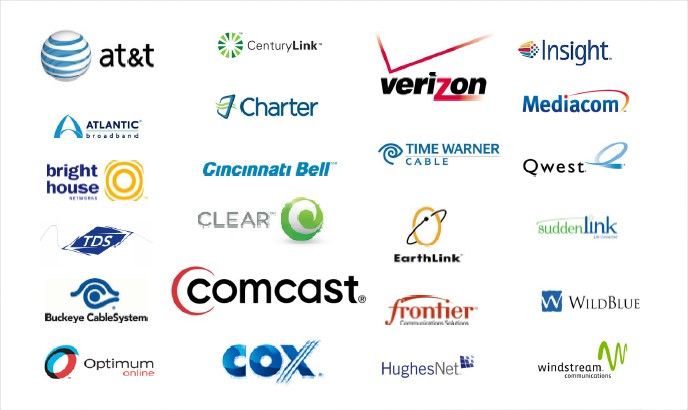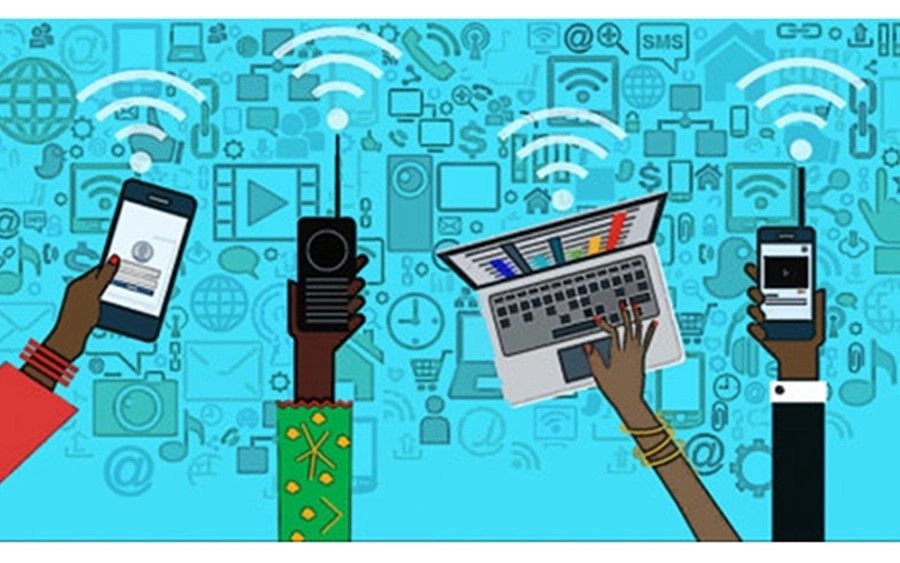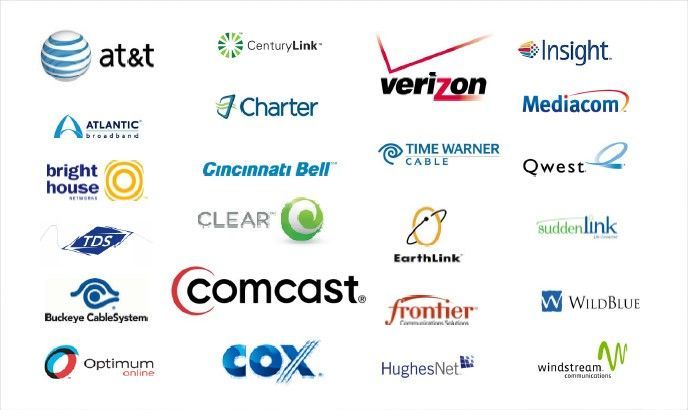
The internet has become an indispensable and transformative force in today's world, revolutionizing how we access information, communicate, conduct business, and entertain ourselves. With over 4.9 billion internet users as of September 2021, representing more than 60% of the global population, its impact on society is undeniable. The internet has democratized knowledge, allowing people worldwide to access a vast repository of information instantly. It has revolutionized communication, enabling real-time connections through emails, social media platforms, and video conferencing. E-commerce has thrived, with online shopping becoming a norm for millions of consumers. The internet has catalyzed remote work and online education, providing unprecedented opportunities for collaboration and learning. Moreover, entertainment has evolved, with streaming platforms and online gaming captivating audiences globally. The internet's importance in the modern world cannot be overstated, as it continues to shape our daily lives and pave the way for a connected, digital future. The internet is a global network of interconnected computer networks that allows the seamless exchange of data and information across the world. It is a vast, decentralized infrastructure that enables communication, collaboration, and access to various online services. The composition of the internet can be broken down into the following components:
1. Network Infrastructure: At its core, the internet is a network of networks. It consists of physical infrastructure, including undersea fiber-optic cables, terrestrial fiber-optic cables, satellites, routers, switches, and data centers. These components work together to route data packets from the source to the destination across the interconnected networks.
2. Internet Protocol (IP): The Internet Protocol (IP) is a set of rules and conventions that govern how data is transmitted and routed over the internet. It assigns a unique IP address to each device connected to the internet, allowing data packets to be sent and received between devices.
3. World Wide Web (WWW): The World Wide Web is a system of interconnected hypertext documents and resources that are accessed through the internet. The web is built on top of the internet infrastructure and uses technologies like Hypertext Transfer Protocol (HTTP) and Hypertext Markup Language (HTML) to enable web browsing and information retrieval.
4. Websites and Web Applications: Websites are individual online destinations accessible through web browsers. They can range from simple static web pages to complex web applications that offer various services and interactions. Websites are hosted on web servers, which store and serve the web content to users upon request.
5. Web Browsers: Web browsers are software applications that allow users to access and interact with websites. They interpret HTML and other web technologies to display web pages, enabling users to navigate the web.
6. Email and Messaging: The internet facilitates communication through email services and messaging platforms. Email uses Simple Mail Transfer Protocol (SMTP) to send and receive messages, while messaging platforms enable real-time text, voice, and video communication.
7. Search Engines: Search engines are tools that help users find information on the web. They index and rank web pages to provide relevant search results based on user queries.
8. Social Media: Social media platforms provide spaces for users to connect, share, and interact with others. They allow users to create profiles, share content, and communicate with friends, family, and the broader community.
9. Online Commerce: E-commerce platforms enable buying and selling goods and services online. These platforms have revolutionized retail, allowing consumers to shop from a vast range of products and services from the comfort of their homes.

The internet is a complex and interconnected ecosystem of networks, protocols, websites, applications, and services that has transformed how we live, work, and interact in the modern world. Its composition enables global connectivity, information sharing, and countless opportunities for communication and collaboration.
The Internet Protocol (IP) is a fundamental communication protocol that enables the functioning of the internet as we know it today. It serves as the backbone of data transmission and network routing, ensuring the delivery of information across interconnected devices and networks worldwide. IP operates at the network layer of the TCP/IP protocol suite and assigns a unique address to each device connected to the internet, known as an IP address. This addressing system allows data packets to be routed from the source to the destination device, regardless of their physical location. IP has evolved over time, with IPv4 (Internet Protocol version 4) being the predominant version for decades and IPv6 (Internet Protocol version 6) introduced to accommodate the increasing number of connected devices. Together, these versions of IP form the foundation of modern internet communication, enabling seamless and efficient data exchange on a global scale. The cost of setting up an Internet Service Provider (ISP) service can vary significantly depending on various factors, including the geographical location, population density, technology infrastructure, and the scale of operations. Establishing an ISP involves several essential components, such as network infrastructure, licensing and regulatory compliance, hardware and software, human resources, and marketing. Building the network infrastructure, which includes last-mile connectivity and core network equipment, can be one of the most significant expenses. The costs of fiber-optic cables, switches, routers, and data centers can add up quickly. Licensing and regulatory fees vary from country to country and may include permits, spectrum licenses, and other legal requirements. Hiring skilled technicians, customer support staff, and administrative personnel also contributes to the overall cost. Marketing and promotional activities to attract subscribers are additional expenses to consider. Overall, setting up an ISP can require a substantial initial investment, ranging from tens of thousands to several million dollars, depending on the scope and ambitions of the ISP service.
In today's digital age, the internet has become an indispensable part of our lives. From accessing information and communication to online entertainment and e-commerce, it plays a central role in connecting the world. However, it might leave some wondering why we pay for something seemingly intangible and available everywhere. Going forward, we will delve into the economics behind paying for internet services, understanding the infrastructure, maintenance, and other factors that make this complex web of connectivity possible.
Infrastructure and Network Costs
The internet operates on a vast network of physical infrastructure, including undersea cables, data centers, routers, switches, and fiber-optic lines. Building and maintaining this infrastructure require significant capital investments, as well as ongoing operational expenses. Internet Service Providers (ISPs) must charge users for their services to cover these costs.
The costs associated with internet infrastructure include:
a. Network Backbone: The core network infrastructure that interconnects large geographic regions and data centers.
b. Last-Mile Connectivity: The local network infrastructure that connects individual users to the internet through cables, DSL lines, or wireless connections.
c. Data Centers: Facilities that host servers and store large amounts of data, requiring continuous cooling, power supply, and security measures.
d. Bandwidth: ISPs pay for the data transferred between various networks, which is often a considerable expense.
Quality of Service (QoS) and Speed
Paying for internet services enables users to enjoy a certain level of Quality of Service (QoS). ISPs invest in technologies and equipment to deliver faster and more reliable internet connections. The speed and QoS are crucial for various online activities, such as streaming high-definition videos, online gaming, and smooth video conferencing.
Different internet plans offer varying levels of speed, data caps, and QoS, allowing users to choose a plan that suits their needs and budget. Higher-tier plans with better QoS may cost more due to the increased investment required from the ISP to provide those services.
Customer Support and Technical Assistance
Internet service providers offer customer support to handle inquiries, troubleshoot issues, and resolve problems users might encounter. Employing support staff and maintaining call centers and online assistance platforms necessitates additional expenditures. The fees we pay for internet services help cover these costs and ensure users receive timely support.
Research, Innovation, and Upgrades
Continuous research, innovation, and upgrades are essential to keep up with the ever-evolving internet technologies and user demands. ISPs invest in new equipment, software, and technologies to improve network performance and introduce innovative features. These investments facilitate the internet's growth and the introduction of cutting-edge services.
Regulatory and Administrative Compliance
ISPs must adhere to various regulatory requirements, which might involve licensing fees, taxes, and compliance costs. These fees are often included in the prices charged to the end-users.
Content and Service Providers
Paying for internet services also fosters an ecosystem where content and service providers can thrive. Content providers, such as streaming platforms and online stores, depend on a reliable and robust internet infrastructure to deliver their services to users worldwide. ISPs use some of the revenue generated from user subscriptions to maintain peering agreements and improve interconnection with content providers.
paying for internet services is not merely a charge for accessing an intangible resource but a means to sustain the vast web of connectivity that powers our digital world. The fees users pay to cover the expenses associated with building, maintaining, and upgrading the internet infrastructure, as well as providing customer support and complying with regulatory requirements. With each subscription, users not only gain access to the internet but also contribute to the continuous growth and improvement of this global network. As technology advances and the Internet becomes even more integral to our lives, paying for Internet services will continue to be a critical part of enabling a connected and thriving digital society.


